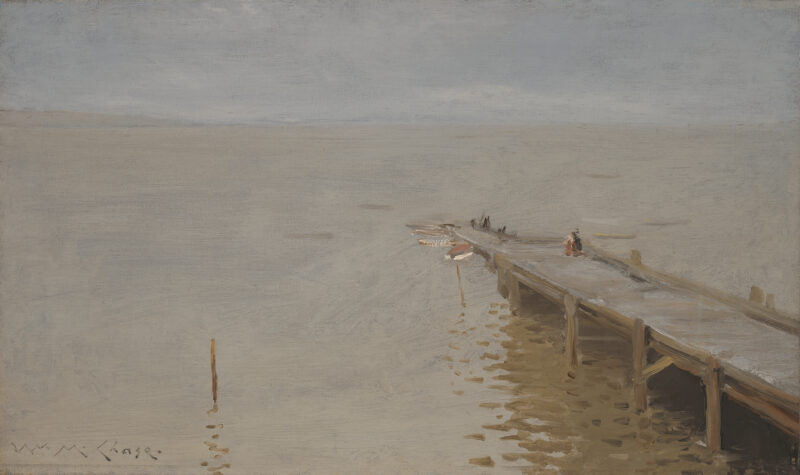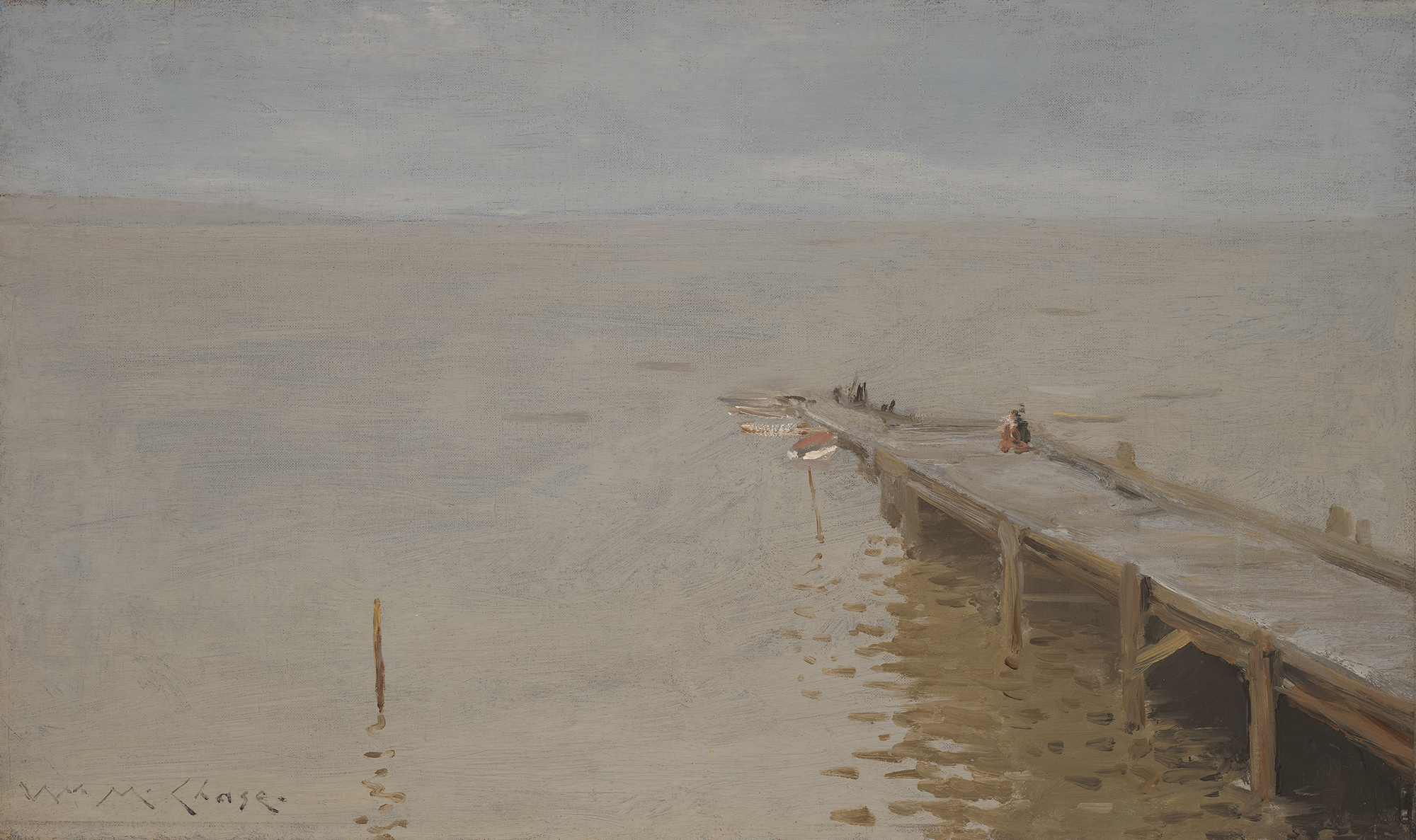
On the Sound
Chase, William Merritt
about 1890
Artwork Information
-
Title:
On the Sound
-
Artist:
Chase, William Merritt
-
Artist Bio:
American, 1849–1916
-
Date:
about 1890
-
Medium:
Oil on canvas
-
Dimensions:
17 1/8 x 28 1/2 inches
-
Credit Line:
Wichita Art Museum, Museum purchase, Paul Ross Charitable Foundation Fund
-
Object Number:
1983.66
-
Display:
Not Currently on Display
About the Artwork
William Merritt Chase was one of the most noted painters in America during the late 19th and early 20th centuries, and certainly an artist who through his teaching exerted tremendous influence on a vast generation of younger artists who followed in his footsteps. Even though he openly acknowledged the influence of many early masters, his own compositions were invariably executed in an entirely new and original manner.
This work titled On The Sound was painted by Chase about 1890. Here a wide expanse of water is broken by a line of low and barely visible hills at the distant horizon and by the sharp diagonal of the pier seen at the right and by a single wooden stake in the left foreground. Near the end of the pier a figure appears to be standing and at the far end a cluster of moored row boats is suggested. What is especially interesting and significant is the strong but highly simplified geometry of the composition. For here the horizon is extremely high and the pier, cropped-off at the lower right-hand edge, sharply pierces the open space pulling the viewer into the composition. Such compositional dynamics clearly testify to the impact which Japanese woodblocks had on the aesthetics of both European and American painting at this time.
In defining three-dimensional forms as well as the quivering reflections along the water surface, Chase has employed loose and lively brush work. Even more significant, his masterful skill in adjusting close color values enabled him to achieve exquisitely subtle tonal harmony and the impression of an all-embracing misty atmosphere. In turn, a quiet and tranquil mood is caught and at the same time the character of a fleeting moment in nature is effectively captured. These features are indeed quite reminiscent of the work of J.A.M. Whistler whose paintings Chase much admired.
